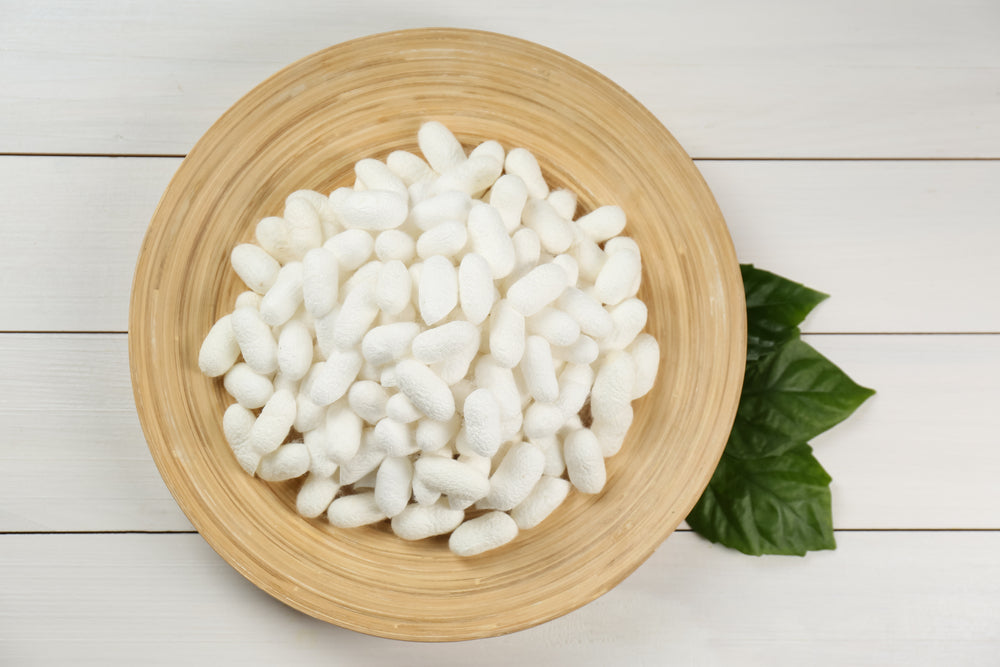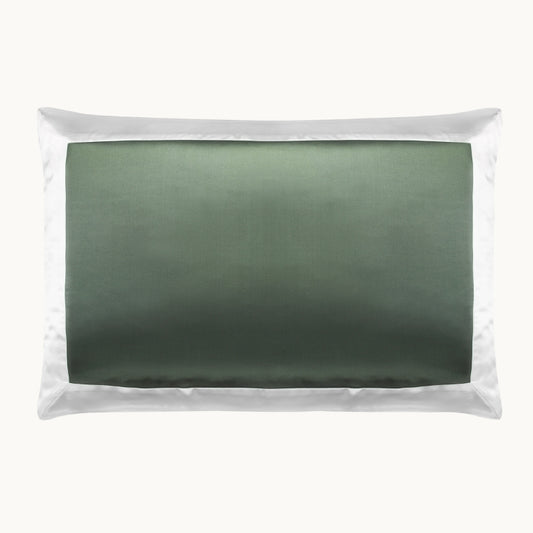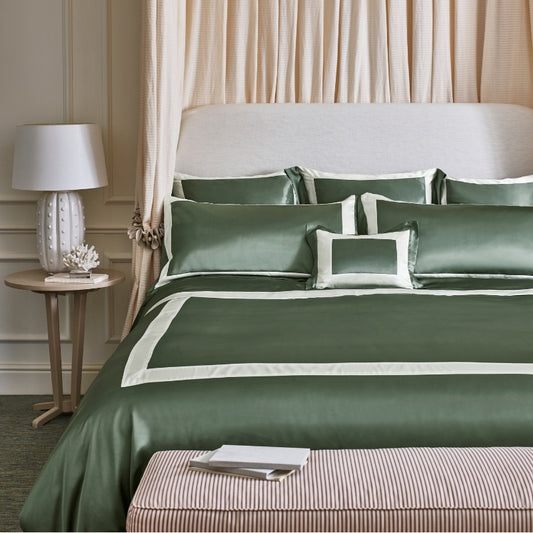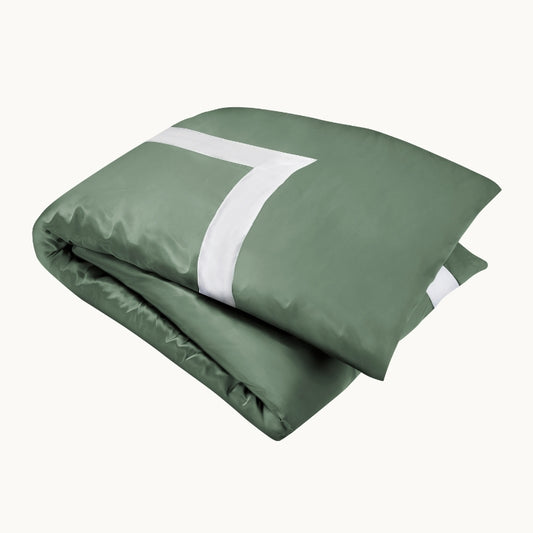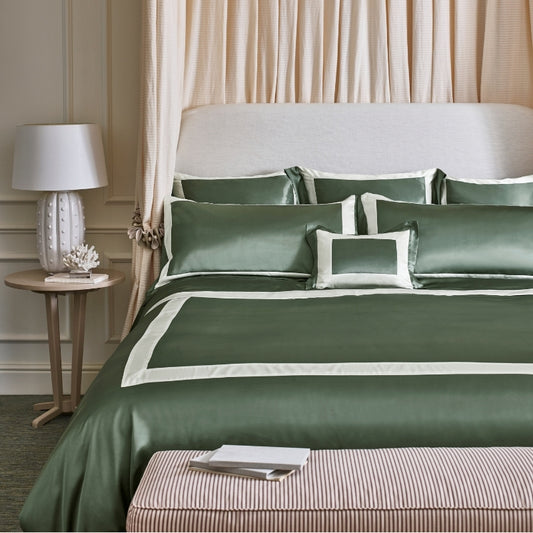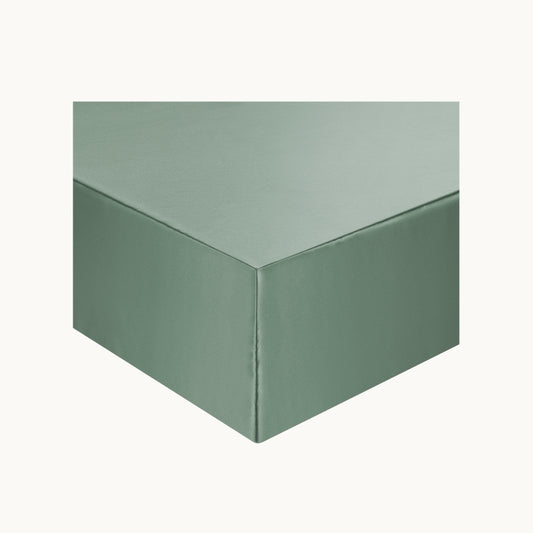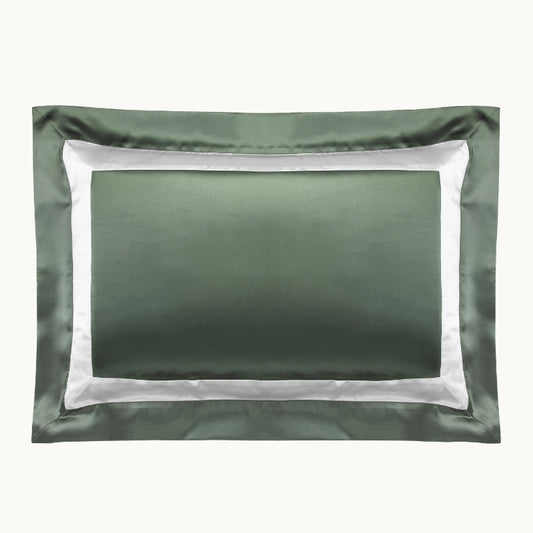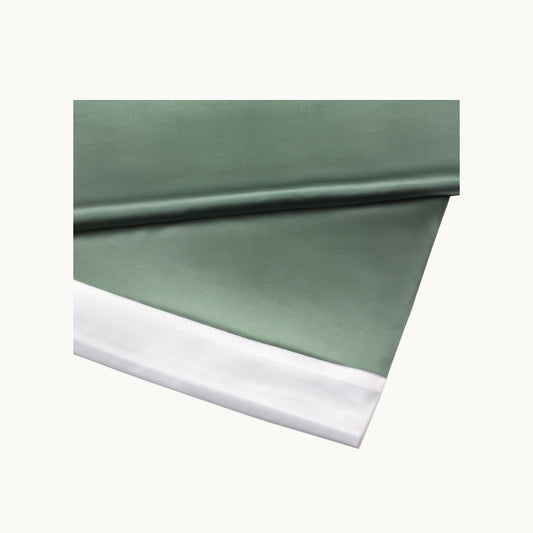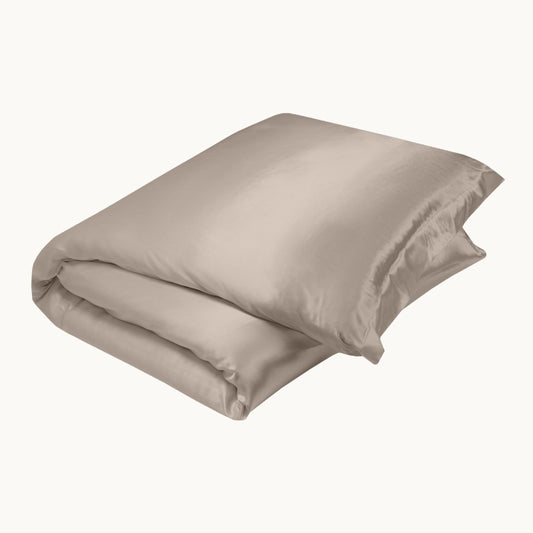One of the most luxurious materials made, the long history of mulberry silk is as rich and interesting as the fabric itself. Crafted through a number of careful, intricate processes that rely on both nature’s incredible talents as well as human ingenuity and care, looking closer at how mulberry silk is made goes some way to explaining why we’ve been enamoured with it for centuries.
We consider ourselves experts in this magnificent natural fabric and invite you to share in our knowledge of mulberry silk. In order to do this, we’ll be delving into the rich history of mulberry silk, considering everything from the legends of the mulberry tree to the processes by which we turn the individually crafted threads of silk into the stunning sheets of mulberry bedding you see in our range of Gingerlily collections. If you’re hoping to learn more about the origins of your own mulberry silk sheets, pillowcases and more, stay with us as we indulge you.
What is mulberry silk?
Taking its origins from China, mulberry silk is one of the highest quality silks in the world. Derived from the delicate cocoons of the Bombyx mori moth, which are fed exclusively from the leaves of the mulberry tree, mulberry silk material is spun from long individual silk fibers. Pure white in colour and beautifully uniform in appearance when expertly woven into a single sheet of fabric, mulberry silk is more refined than other silk alternatives such as wild silk and Tussar silk.
At Gingerlily, all of our beautiful silk bedding, nightwear and accessories are crafted from this luxurious material but, outside of the worlds of interior design, health and beauty, people have found uses for silk that can’t be provided by any other natural material. Pound for pound, silk is significantly stronger than steel, and its flexible and stretchy nature has made it suitable for a multitude of purposes, including parachutes, medical sutures and other life saving devices - the possibilities are endless for this versatile material.
To discover more about the properties of mulberry silk, take a moment to browse through the other articles we’ve put together which cover the health and beauty benefits mulberry silk fabric can have on your hair, skin and sleep.
How is mulberry silk made?
As we’ve touched on briefly, mulberry silk is produced naturally by the larvae of the Bombyx mori moth, a domesticated descendant of the wild silk moth Bombyx mandarina. Historically, this species of moth can be found across a large geographical range that stretches from parts of India and China all the way to the most remote parts of Russia. This method of producing silk with domesticated moths – known as sericulture – is a Chinese tradition that‘s over 5000 years old.
While mulberry silk fabric is sometimes known as Bombyx silk after the moths responsible for spinning the cocoons, it's more common name is derived from the white mulberry (Morus alba) tree, the leaves of which are the sole food source for Bombyx larvae. Once the larvae consume enough food from the mulberry tree, they begin to weave their cocoons. This vital step in the production of mulberry silk takes only several days and, once it's complete, the cocoon is carefully unravelled, producing the silk fibres that will be cleaned and turned into the fine mulberry silk material used in our luxury bed linen.

What is a mulberry tree?
The mulberry tree, which is so integral to the creation of our 100% mulberry silk fabric, is found in many parts of the world. The tree can be found throughout Europe, Northern America and many different areas in Asia, however only the white mulberry tree is native to China. In terms of growth, the mulberry tree is a very resilient plant, spreading quickly and growing to maturity in around eight to nine years. These mulberry tree facts, however interesting, are nothing compared to the near mystical history the plant has earned for itself.
Long since praised for their medical benefits, the Chinese Pharmacopoeia lists white mulberry leaves, root bark, branches and fruit as ingredients in medicinal preparations, but other parts, including the sap and wood ash, have also been used throughout the ages. Mulberry leaves are believed to help regulate blood sugar levels and are often used to brew a refreshing herbal tea. Many cultures also believe that the leaves of the mulberry tree can help with weight loss and weight management, as well as lower cholesterol, improve skin and promote better digestion.
The legendary history of the mulberry tree
In the long history of the mulberry tree, it has gained an almost legendary status, making symbolic appearances across literature, religion, legends and more. Below, we’ve detailed some of the most interesting occurrences of the mulberry tree throughout history that we’ve come across since working with the silk fibre.
The mulberry tree in myths and legends
Mulberry trees appear in many legends and traditions around the world. In Japan, for example, many of the paper offerings left at shrines are made from the mulberry tree. Almost 2000 miles away in China, in ancient legends the sun is represented as a three legged sun bird that resides proudly on the top of a mulberry tree.
The royal history of the mulberry tree
The British Royal Family has a strong historical association with the mulberry tree, with a large collection of trees being present in the royal gardens at Buckingham Palace. This mulberry garden was originally planted by King James I in 1608. No one knows whether the idea of a mulberry garden at Buckingham Palace was King James I’s or a suggestion made by William Stallenge, who had published a book at the time, entitled ‘Instructions for the planting and Increase of Mulberry Trees, Breeding of Silkworms and the Making of Silk’.
Thousands of mulberry trees were imported and planted by the King throughout his reign. After many years, the mulberry trees grew to a fruit bearing stage but any attempts to produce silk from the trees failed. Despite this, William Stallenge continued to maintain the mulberry garden even after the death of the King in 1625. The garden has been replanted and cared for ever since.
The mulberry tree in literature
Mulberry trees appear regularly in literature, most notably Shakespeare’s A Midsummer Night’s Dream. In this tale of forbidden love, Pyramus and Thisbe are set to wed beneath a mulberry tree. When Pyramus arrives to find nothing but Thisbe’s bloodstained scarf, he, in true Shakespeare fashion, stabs himself. In this fateful act, his sprayed blood stains the white mulberries of the tree dark red. From that day forward, the juice of those berries remains dark red.
Mulberry berries
The mulberry tree has more to offer farmers than a supply of valuable mulberry tree leaves with which to feed the Bombyx mori moth for silk production. Instead, the mulberry fruit tree also produces an edible fruit called a mulberry. These mulberry berries are similar in appearance to blackberries and, like many blackberries, have a tart and sweet flavour. When not enjoyed raw (once ripe, as the unripened fruit can cause stomach upsets), mulberry berries are most commonly used in culinary dishes such as pies, tarts and even infused in tea.
More than just delicious, mulberry berries are also praised for the nutritious value they can offer. High in important vitamins and minerals, including Vitamin C, Iron, Vitamin K1, Potassium and Vitamin E, mulberries are a healthy addition to any diet, particularly when dried and enjoyed as an easy, on-the-go snack. When looking at skin in particular, the Vitamin C in this miraculous fruit provides a range of impressive benefits, helping to improve the growth and repair of body tissues, leaving skin looking and feeling healthier.

What does a mulberry tree look like?
Resilient and versatile, the appearance of a mulberry tree depends on the environment it has been planted in. Mulberry trees can be planted up against walls and will continue to thrive despite the limited space, but on a mulberry tree farm it is more common to see them planted with 5 – 10m of surrounding area left clear.
When given suitable space, a healthy mulberry tree can grow up to 30 – 50ft high depending on the species of tree. As they grow, they often become crooked and twisted – a feature which is often capitalised on by landscapers and other architectural designers.

Discover luxury mulberry silk bedding, nightwear & accessories
At Gingerlily, the time we’ve spent working with mulberry silk has inspired us all. This truly miraculous material is revered all over the world for its health and beauty properties and we adore working with it and weaving it into more and more beautiful designs.
If you’re looking to bring some mulberry silk fabric into your own home, browse through the collections of luxurious silk bed linen, pyjamas, eye masks and more online at Gingerlily. All of our products are made from 100% mulberry silk fabric, giving you a little bit of luxury to enjoy.
